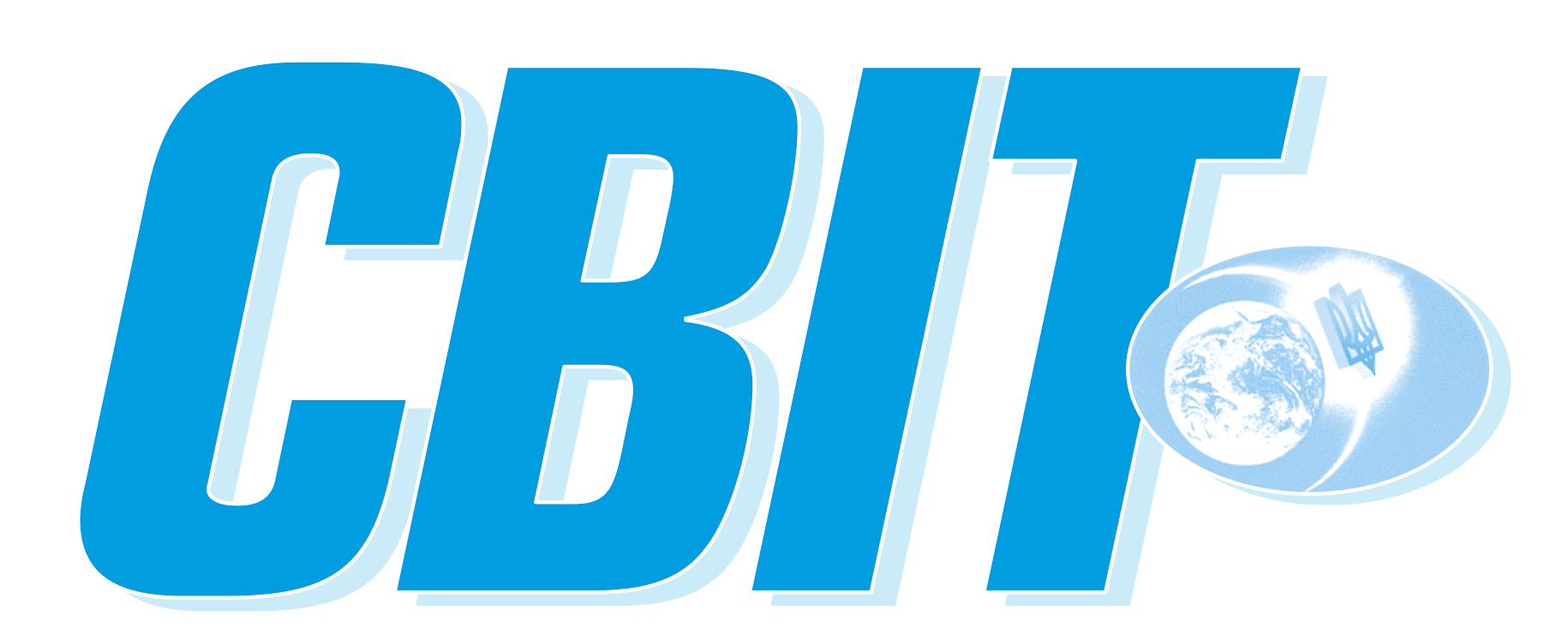The discussion on the innovative development of the national economy has been going on in Ukraine for over 20 years. It was discussed at numerous all-Ukrainian conferences, at meetings of many Ukrainian governments, and at significant international events. It was thought that scientific institutes, high-tech business and public authorities were the main actors in the innovation process in Ukraine. Universities were not perceived as serious participants and partners in the process.
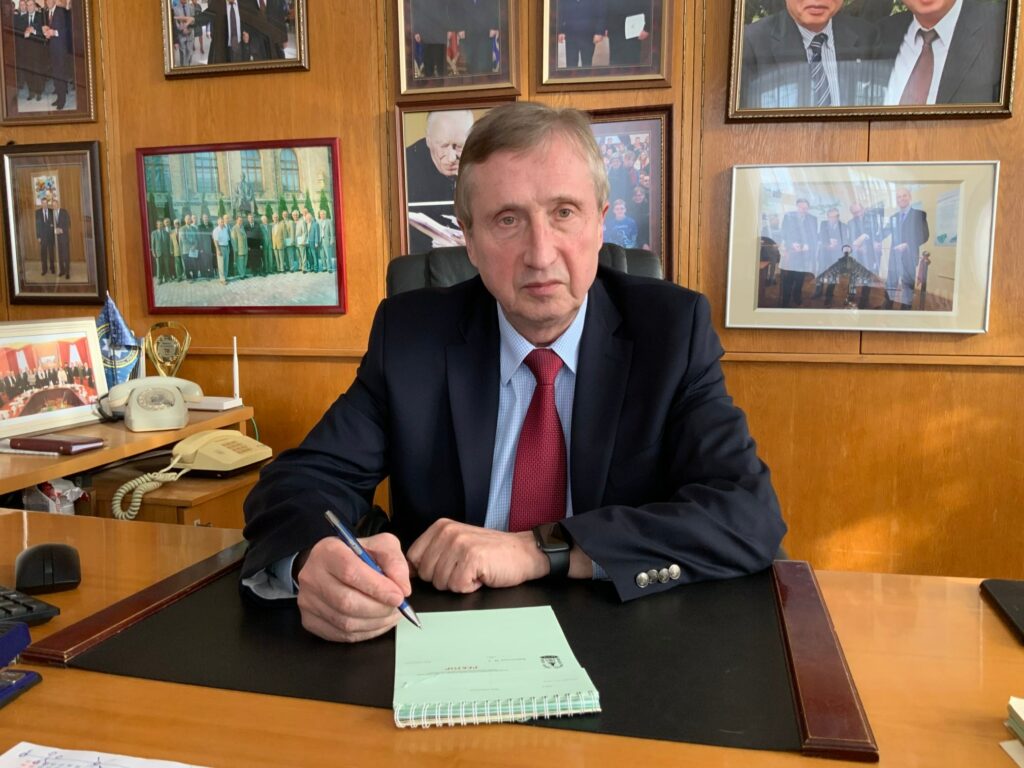
It is nothing to be surprised at. This approach was formed in Soviet times and, by inertia, has survived to the present day. It was thought that close cooperation with high-tech production is not natural for classical education, and not every graduate will need entrepreneurial knowledge and skills. The central planning and management bodies linked only the production sector and academic science in a single innovation complex.
Currently, there is no centralized management in the State. In a market economy, the State can only propose rules for innovation development, political and resource incentives for important projects and programs. All other types of interaction between the participants in the innovation process should be carried out by them independently on the basis of mutual interests.
WHY ARE UNIVERSITIES IN THE CENTER OF PROGRESS IN DEVELOPED COUNTRIES?
We see that a university is a core of innovation in any developed economy. Universities became engine for progress in their countries, centers of innovation, critical thinking, and social development. Once, we in Igor Sikorsky KPI tried to understand, why do universities perform such a mission? We began to carefully study the experience of Silicon Valley, formed around Stanford University in the United States, the innovation cluster Kista Science City in Stockholm at the Royal Technical University, Sweden, the innovation cluster at Technion University in Haifa (Israel), Science Park in Ankara around the Middle Eastern Technical University, innovation clusters in Japan, China and other countries.
The system-forming link in all these innovation clusters is the university, which conducts research for business based on their close cooperation, creates the flow of know-how needed for continuous improvement of products and services produced by this business, and trains quality staff. In this model, the university becomes the main center for putting public efforts and resources for innovation. Universities of this type are usually called research or entrepreneurial universities.
The research university, having a high level of autonomy, retains all the academic components, but at the same time works in three interrelated areas: education, research, and innovation implementation of high technologies and their introduction into markets (technology transfer).
Having studied the models of the best technical universities in the world, we at KPI have come to a conclusion that they are similar in their fundamental basic principles, although they differ in organizational and formal aspects. However, it is very difficult, or almost impossible to build such a model in a single university in our conditions of overregulation.
One of the important elements of this mission is the university autonomy. KPI has consistently defended this position all these years. (By the way, the latest version of the Law of Ukraine “On Higher Education” somewhat expands the university autonomy. The only question is how to use it properly).
In this case, in addition to the traditionally accepted, “external” autonomy, the internal autonomy, the autonomy of the university subdivisions is also important. KPI, like other technical higher educational institutions in Soviet times was 80-90% focused on the military-industrial complex, and its activities were strictly regulated from above. In the new conditions, such a model of the university could not be effective. Therefore, even at the dawn of Ukraine’s independence, the KPI gave broad autonomy to its subdivisions. There were 72 of them at the beginning: faculties, educational and scientific institutes, design bureaus, research institutes. etc.
As a result, the KPI was transformed from a Soviet-style polytechnic institute into an internally free university, where faculties became a kind of branch of the higher educational institutions with freedom to work at the labor markets, provide educational services, and conclude international contacts. They even had their own bank accounts for some time. The university became a coordinating link, an “umbrella” for this system of separate sectoral higher educational institutions – in the sectors of mechanical engineering, electronics, energy, chemistry, etc.
This was one of the most important steps. A large number of scientists, professors and employees immediately became more active at the University. Taking advantage of internal autonomy, they established direct contacts with enterprises, partners in Ukraine and abroad, participated in research and educational projects.
In fact, it took more than one year to learn to enjoy this “internal university freedom” (and at the same time be responsible for it). Professors and scholars had to mentally readjust, convince themselves that they should not be commanded from above on the most of small matters. They had to learn to independently offer quality services and their developments to enterprises, conclude contracts, promote research, organize the defense of thesis papers, create internships for students together with employers and organize their job placing… Indeed, this internal autonomy gave a lot.
The second fundamental principle of KPI’s activity was innovation. In the days of the centralized economy, the university received a certain topic, implemented it, and no one cared about commercialization or promotion of startups (although such terminology did not exist then). In those days it was unnatural. Therefore, in the days of independent Ukraine, when central planning bodies, such as the Derzhplan, disappeared, a large number of universities were not immediately able to restructure in order to operate in market conditions. Unfortunately, those higher educational institutions that failed to do so turned into purely educational institutions that did not operate according to the creative model: “Create something new”, but according to the conservative one – “Repeat the known”. A study of the experience of the world’s most successful islands of innovative breakthrough has shown that a university in at the heart of each of them. It has become clear that high-tech business is reaching out for progressive youth. Thousands and tens of thousands of well-educated students have ambitions to become future Bill Gates, Mark Zuckerberg, Steve Jobs… If you look at the fate of these and many other celebrities, you can see that they all started their projects from the student bench. Talented young people, who have ambitions, who are not disappointed in life, and do not know that something is impossible to do at all, fight a losing battle and very often create something that did not exist before.
And this is the peculiarity of the success of innovation in our time. Developed high-tech business approaches the concentration of good scientific schools with ambitious educated youth, and adds its knowledge, competencies, capital to these clusters. Business operates on the principle: “You have creative thinking, but are not trained to commercialize it? We are ready to add this component, create laboratories where you can do your research (but on our projects), learn to commercialize your ideas and receive royalties as part of the profits from the invention under intellectual property law as co-authors of the development. Co-authorship is documented by the patent; the agreement on payment of the royalty is concluded without discontinuing training or teaching.
MISSION OF IGOR SIKORSKY KPI AS A RESEARCH UNIVERSITY
After overcoming the “jolt” caused by transition from the Soviet-era education system to the education system of independent Ukraine, Kyiv Polytechnic since the early 2000s has taken a determined line of its transformation into a research-type university according to models existing in developed countries. The main goal of the University was to become an innovation center that would launch dozens and hundreds of startups into the country’s economy every year, which should grow into more important business projects on a regional and national scale.
What were the prerequisites for this?
The fact is that the KPI has been essentially innovation institution since the beginning of its almost 125-year history. Its founding fathers Dmitry Mendeleev, Nikolai Zhukovsky, Clement Timiryazev, Eugene Paton and others launched a model of education called “science-production-personnel”, whose main purpose was to create something absolutely new, and bring it into circulation. Students were immersed in this process; at the same time, they received the necessary general scientific and engineering knowledge. KPI has preserved this model in its main features to this day.
Therefore, Kyiv Polytechnic is not just an educational institution that trains highly professional staff. The University tries to become an intellectual center, the engine for technological progress of society. And, certainly, the center of formation of new human capital, which should put society forward in its progressive development.
In this model, the University cannot be limited to the educational, scientific, or even innovative process. It should see itself as an advanced link in the technological development of society, which would accumulate intellectual potential, develop new horizons for the progress of basic natural knowledge and engineering skill, great technology, including defense, would indicate the economic, environmental and security challenges facing the country, and ways to overcome them and march ahead.
KPI started a systemic innovation activity establishing the Kyiv Polytechnic Technopark in 2002 (about 10 tech parks were then founded in accordance with the relevant laws of Ukraine) and successfully completed the first few innovation projects. But the idea of technology parks turned out to be wrong – the State made a mistake giving tax and customs benefits to product developers within the model of these innovative entities. It turned out that when the State provides benefits, competition for new products and services disappears in the market, but the competition for these benefits appears, and specific methods are often used.
Therefore, in 2006, at the initiative and with the active participation of the KPI, the Parliament approved the first law in Ukraine “On the Kyiv Polytechnic Science Park”. In the model of the science park the legislator laid down the principles that exclude any benefits from the State and targeted public funding of startup projects. The main principles of the new formation are based on the combination of interests of four groups of participants.
The first is a high-tech business that wants to win in its markets with the latest products or services and must receive “feed” in the form of a permanent flow of new ideas, know-how, new startups and quality staff. The source of such ideas and personnel for the further promotion of companies in their markets is the university, where many talented young people study and work. Through its science park, the University enters into a cooperation agreement with a high-tech company, they jointly patent inventions, jointly implement new products and services, and jointly create a form of dual training. The business pays royalties to the authors of the implemented innovative developments, assists the University in creating laboratories and dual learning centers, where University students and professors study the latest advances in engineering and technology in the relevant subject area, and work on innovative solutions.
The second group consists of inventors, innovators. These are young scientists, students, professors.
Traditionally, in the system of science and education of Ukraine, inventions were counted by the number of registered titles of protection for inventions, utility models and pre-production prototypes. Then the scientific or educational institution reported on their number, and everything was put on the shelf. But now the inventors together with high-tech businesses are interested in trying to commercialize new prototypes and market them, receiving royalties.
The third interested participants are faculties, departments of the University, which have the opportunity to work closely with high-tech companies, train quality staff for them and create new laboratories together with these companies, receive the latest equipment, places for internships and employment of graduates.
And the fourth participants in this model are investment and venture funds (risk funds), which are increasingly interested in investing in projects that are based on a greater share of new critical knowledge, as projects with a small amount of new knowledge provide less economic return. Over time, more funds of this kind appear, they “hunt” for breakthrough ideas, startups that can significantly increase profits.
The benefit of the University in this model is that young people are motivated by the prospect to become successful innovators, entrepreneurs, businessmen, they are interested in perfecting themselves in high technology, combine study with work in high-tech business, receive a decent reward, while staying in their research schools and in their country.
Naturally, the high-tech business did not immediately believe in the University’s innovation ecosystem. During the first years of the Kyiv Polytechnic Science Park (from 2006 to 2012), investors only observed and did not risk investing. But in 2012 it worked: the first two investors invested in four small startups, which attracted them at the Festival of Innovative Projects “Sikorsky Challenge – 2012”. Then the investment in dollar equivalent was 26 thousand. In 2015, it amounted to $ 2 million for 8 startups. In 2016, the total investment in 11 startups amounted to 26 million dollars. In the following years, there was a steady increase in total investment and in the number of startups selected by high-tech businesses. And this regularity proves the validity of the chosen model of the “Sikorsky Challenge” innovation ecosystem.
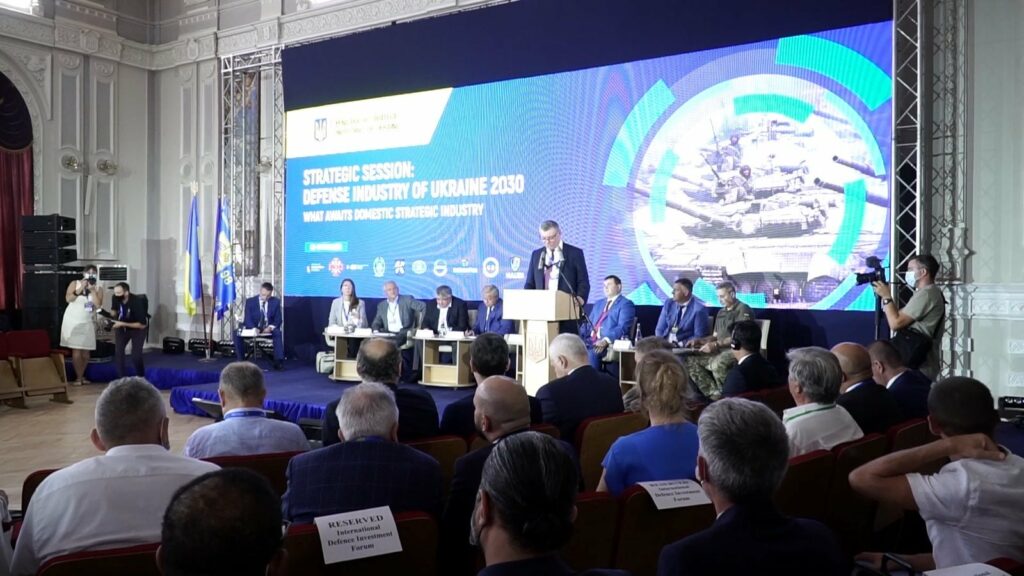
The natural question arises: is this money directly invested in the University, its infrastructure, training and laboratory facilities? Answer: no direct investment. The University, creating an innovative cluster, “incubating” inventors and authors of startups, forming entrepreneurs from them, attracts high-tech business and its capital in the cluster. In this model, the University upgrades teaching and research equipment, modernizes laboratories, provides opportunities for its scientists, professors, students to improve and master their entrepreneurial skills, receive royalties from the implementation of their inventions without leaving their research schools. That is, investment in the University comes indirectly.
Over the last 15 years, the Sikorsky Challenge University’s innovation cluster has developed rapidly. Now it includes the Kyiv Polytechnic Science Park, the Sikorsky Challenge Startup School (a subdivision of the University that teaches inventors to become entrepreneurs), and the innovative Sikorsky Challenge Holding, which is aimed at growing (incubation or acceleration) startups to the level of prototypes, small batches and their further promotion in national and foreign markets.
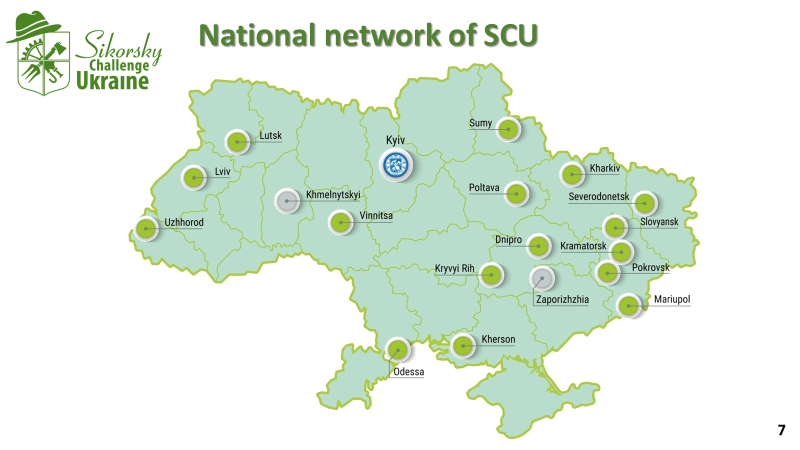
7 high-tech Kyiv enterprises have joined the University innovation cluster “Sikorsky Challenge”. This is a state-owned enterprise of special instrument engineering “Arsenal”, OJSC “S.P. Korolyov Meridian”, State Enterprise “Kyivprylad Production Association”, and others. They are interested in the Sikorsky Challenge innovative cluster to bring its orders, place them for production of prototypes, small batches and even for mass production of new technology.
Every year the University holds Festivals of Innovative Projects “Sikorsky Challenge”, combining inventors with their startups on a single platform with high-tech companies and investors who are looking for the best startups for further implementation in their business, and investment and venture funds that are interested in investing in promising startups for receiving further profit. Since 2012, ten Sikorsky Challenge Festivals have been held.
Working in accordance with the research University model, Igor Sikorsky KPI became the utmost startup developer in Ukraine. In its 72 scientific schools, 100 to 150 startups appear annually for modern engineering industries: mechanical engineering, green energy, biomedical engineering, information technology, telecommunications, clean production and others.
“SIKORSKY CHALLENGE – UKRAINE” INNOVATION ECOSYSTEM
The University innovation ecosystem “Sikorsky Challenge KPI” has already gone far beyond NTUU ” Igor Sikorsky KPI”; it covers 18 of the 25 regions of Ukraine is a nationwide innovation cluster “Sikorsky Challenge Ukraine”. It is an open innovation ecosystem that unites local governments, universities, research institutes, business companies, foundations and public organizations in different regions of Ukraine.
Its central core is the Igor Sikorsky KPI with the Kyiv Polytechnic Science Park, the Sikorsky Challenge Startup School, the Sikorsky Challenge Festival of Innovative Projects, the Sikorsky Challenge innovation holding and other components. Abroad, the Sikorsky Challenge Ukraine innovation ecosystem is represented by partner companies in four countries: the United States, Israel, China and Azerbaijan.
Today, the main activities of Sikorsky Challenge Ukraine are defense and security, industrial high technology and space, biomedical engineering and human health, information technology and cybersecurity, agricultural technology, green energy, ecology and some others.
In 15 years, 110 high-tech companies from the USA, Europe, Ukraine and other countries, several venture and investment funds have joined the innovation ecosystem. More than 150 high-tech products and technologies with significant economic and social impact have been launched. At least 3,000 persons pass through the innovation ecosystem every year.
SOME EXAMPLES OF SUCCESSFUL STARTUPS
In 2012, a graduate student of the Faculty of Aviation and Space Systems of Igor Sikorsky KPI, Roman Karnaushenko went to the festival “Sikorsky Challenge 2012” with the idea of creating an unmanned reconnaissance aircraft with augmented performance. The investor, the Academician Mikhalevych Venture Fund singled out the project, the order was placed at OJSC “S.P. Korolyov Meridian”, and now the Spectator drone is used by the Ministry of Defense of Ukraine. It is mass-produced and widely exported. It is used for exploration, precision agriculture, meteorology. According to its characteristics, Spectator belongs to the high-class drones – such drones can be designed by the United States, Israel, two or three other countries.
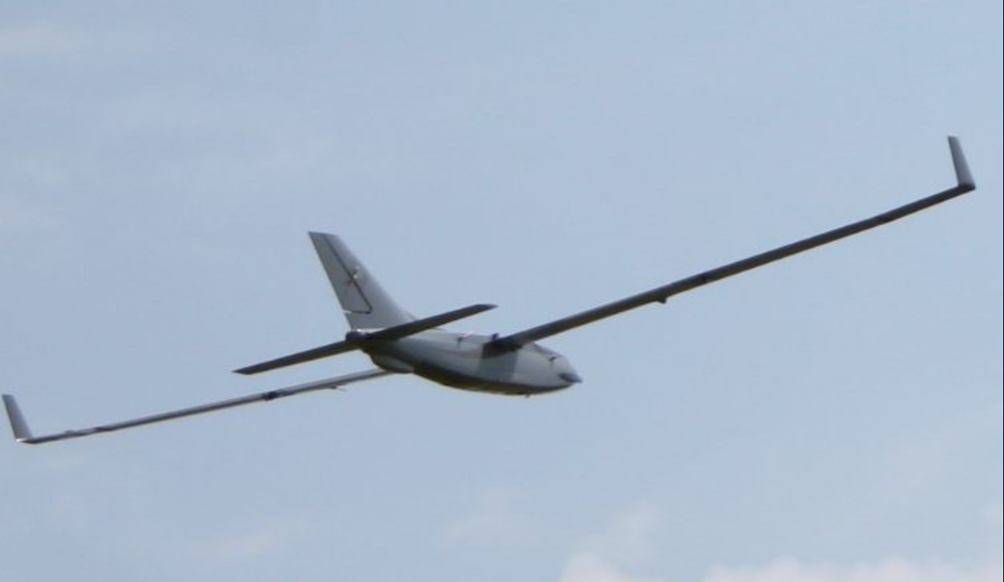
Another important innovation project of Igor Sikorsky KPI is to create a series of nano- and microsatellites for research purposes. It all started with a startup, with which the team led by PhD in Engineering Borys Rasomakin participated in the “Sikorsky Challenge 2013” festival. Ukrainian venture funds named after Academician Mikhalevych and Kostiantyn Kalinin, and Boeing became its investors. In KPI laboratories these devices were created, they passed all preparation stages, certification. The first two satellites of this series, PolyITAN-1 and PolyITAN-2, were launched in 2014 and 2017 within the framework of the Horizon 2020 European research and training program. Currently, the University’s “Sikorsky Challenge” innovation cluster creates a series of the next nano- and microsatellites designed in order to solve problems of remote sensing of the Earth, for biological, geophysical and other research.
The next startup of the Igor Sikorsky KPI is based on improving the technology of membrane water purification, focused on the processing of aggressive mine waters in the mining towns of the eastern part of Ukraine. On the basis of this startup in the city of Alchevsk, Luhansk region, a mine water treatment plant with a capacity of up to 20,000 m3/day was built in 2010. (Unfortunately, now the city is in the temporarily occupied territory). Nowadays, the government authorities of Ukraine together with the mayors of Donbass cities want to widely replicate this project in the eastern regions of the country controlled by Ukraine.
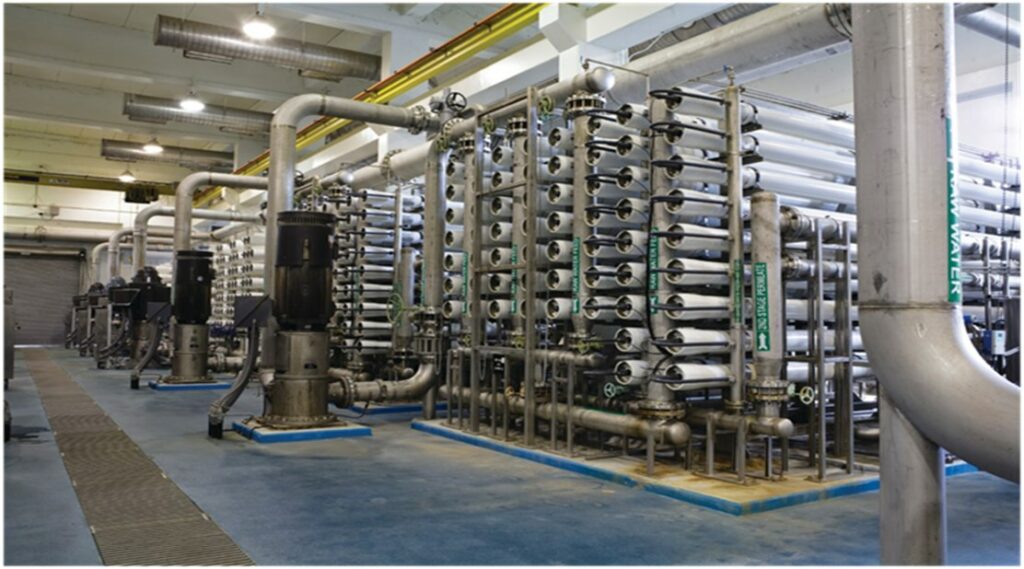
Recently, leaders and scientists of the city of Pokrovsk, Donetsk region, visited the KPI with this purpose. This year, their startups took part in the jubilee X “Sikorsky Challenge 2021” Festival for the first time.
The next step of cooperation may be the implementation of innovative water purification technologies in Pokrovsk, which were presented in the course of the meeting.
SEARCH FOR A MODEL OF INNOVATION DEVELOPMENT OF UKRAINE
For Igor Sikorsky KPI, one of the examples of successful innovation development was the Technion University in Haifa, Israel. Working as a traditional engineering school since 1925, it began its “innovative restructuring” fifty years ago. At that time, Israel had a predominantly agricultural economy. However, the defense of the country was always the critical issue for Israel. The political authorities of Israel had a clear understanding: if the country’s economy is not reoriented from raw materials to high-tech, the existence and sovereignty of the state will be threatened. The 4th Prime Minister of Israel, our compatriot from Kyiv, Ms. Golda Meir emphasized it.
Innovations started with Technion. Having formed a clear political vision of the further development of the country, the State actively helped to create the infrastructure of the future innovation hub.
It built a scientific city (“Technion quarter”) with research centers, laboratories, libraries around the university, on 300 hectares. Now, in addition to Technion and the School of Engineering at Ben-Gurion University, there are dozens of other powerful innovation centers in the country.
Thus, thanks to the mission of one university, the whole country was reoriented towards a high-tech economy and a high level of national security.
This example is inspiring. Igor Sikorsky KPI would also like to fulfill a similar mission in Ukraine. First, on the basis of the Sikorsky Challenge Ukraine pilot project, the University tries to help the country shift from raw, low-tech to high-tech development. And, secondly, to make its own moderate contribution to improving the national defense capability. Now, one-fifth of Sikorsky Challenge Ukraine startups have dual and defense purposes. During the years of armed conflict in eastern Ukraine, six innovation developments of the Igor Sikorsky KPI were put into service in the country. And they are operating now.
Certainly, we would like to see the attitude towards the development of research universities as it once was (and is now) in Israel. The National Council for Science and Technology works in Ukraine for several years, the National Research Foundation announces competitions for the second year, but so far, everything that can be achieved within the Sikorsky Challenge Ukraine project needs many efforts and hard work without the help of public scientific institutions. We are convinced that the State and its structures need to support basic research as the priority. Inventions and startups grow on its basis that later continue to live their lives and no longer need government funding to support them. This is the responsibility of high-tech businesses.
After all, in principle, Ukrainian business does not invest in basic science and will not invest in it. Therefore, if the State wants successful development, it must support basic science in academies, universities, research institutes, otherwise it will root out the further development of not only science but economy, state and security as well.
However, the practical experience shows the opposite process: over the past ten years, the share of funding from the state for basic science, in particular, in Igor Sikorsky KPI, significantly decreased. Moreover, the University proved by means of examples that every hryvnia invested in the financing of basic science in Igor Sikorsky KPI gives back to the economy of Ukraine, through the innovation ecosystem, thirty-one hryvnias.
It would seem that you need to take care of the goose that lays golden eggs! But that’s not happening!
Many hopes were pinned on the National Research Foundation. In present-day conditions, it should be focused on fundamental research of a breakthrough nature, which determines the development trends of the State. Based on the progressive principles of competitive selection of projects, so far, its activities are not always transparent and scientifically sound.
But R&D financing should not be reduced to a single financial source. It should be multi-channel, based on the main strategy of the State development. There are many institutions of various forms of ownership in society, interested in the results of scientific research. Therefore, there must be many agents for the development of science. It is up to the State to support them with simple, transparent and convenient rules.
In fact, it is impossible to build a high-tech, economically developed country without science. But the leading role in this process belongs to the State.
It must pursue a policy of economic and social development that will require new ideas, inventions, technologies and will be based on talented human capital. A new stage requires a new vision of the role of science in the State, science as a component of the development of society, which penetrates into it and moves it.
Svit newspaper, № 1-2, January 2022
